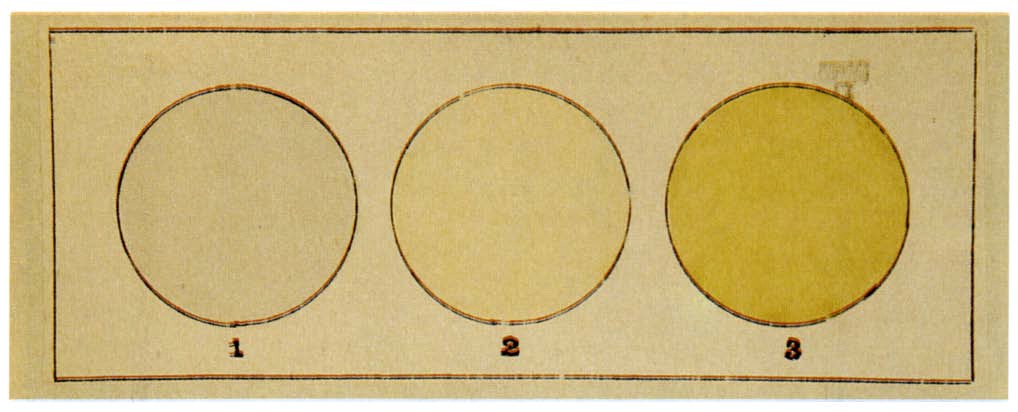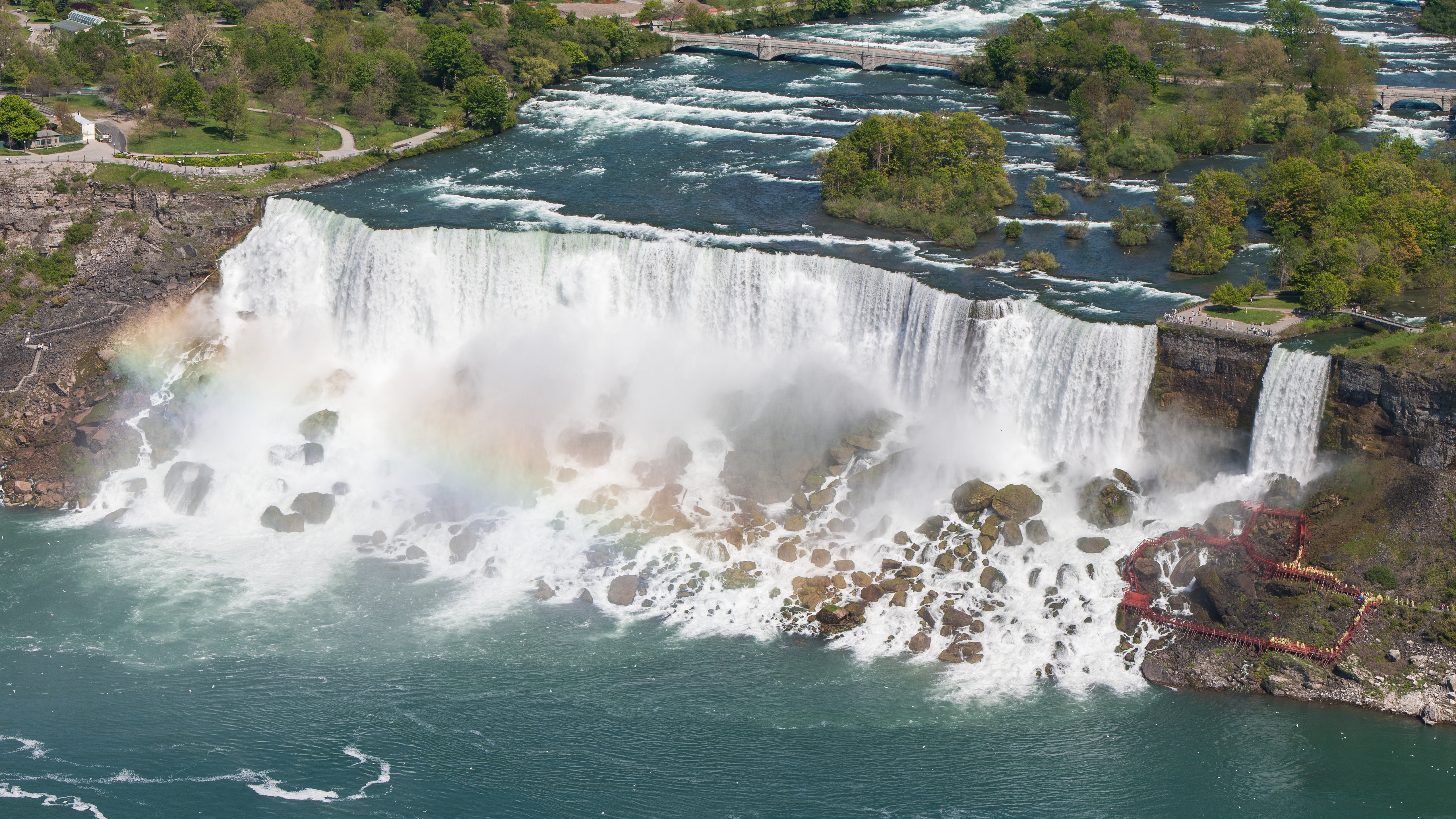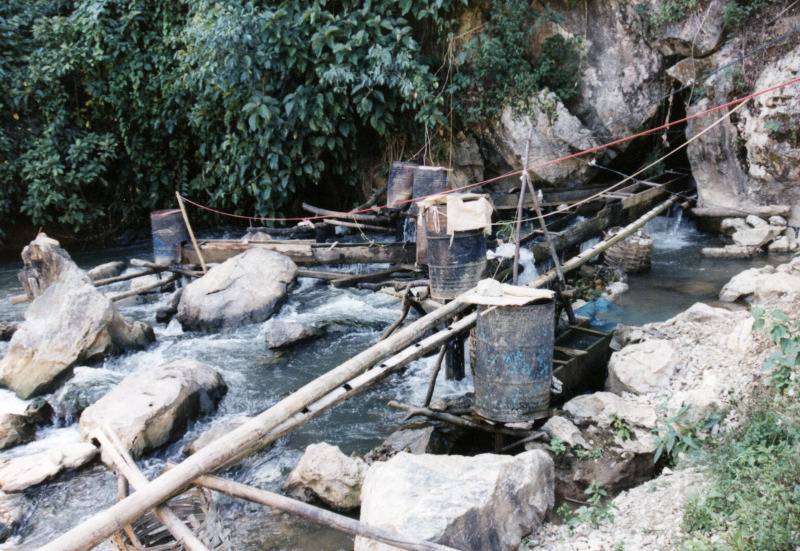|
Calcium Carbide
Calcium carbide, also known as calcium acetylide, is a chemical compound with the chemical formula of . Its main use industrially is in the production of acetylene and calcium cyanamide. The pure material is colorless, while pieces of technical-grade calcium carbide are grey or brown and consist of about 80–85% of (the rest is CaO ( calcium oxide), ( calcium phosphide), CaS ( calcium sulfide), ( calcium nitride), SiC (silicon carbide), C (carbon), etc.). In the presence of trace moisture, technical-grade calcium carbide emits an unpleasant odor reminiscent of garlic. Applications of calcium carbide include manufacture of acetylene gas, generation of acetylene in carbide lamps, manufacture of chemicals for fertilizer, and steelmaking. Production Calcium carbide is produced industrially in an electric arc furnace from a mixture of lime and coke at approximately . This is an endothermic reaction requiring per mole and high temperatures to drive off the carbon monoxide. ... [...More Info...] [...Related Items...] OR: [Wikipedia] [Google] [Baidu] [Amazon] |
Acetylene
Acetylene (Chemical nomenclature, systematic name: ethyne) is a chemical compound with the formula and structure . It is a hydrocarbon and the simplest alkyne. This colorless gas is widely used as a fuel and a chemical building block. It is unstable in its pure form and thus is usually handled as a solution. Pure acetylene is odorless, but commercial grades usually have a marked odor due to impurities such as divinyl sulfide and phosphine.Compressed Gas Association (1995Material Safety and Data Sheet – Acetylene As an alkyne, acetylene is Saturated and unsaturated compounds, unsaturated because its two carbon atoms are Chemical bond, bonded together in a triple bond. The carbon–carbon triple bond places all four atoms in the same straight line, with CCH bond angles of 180°. The triple bond in acetylene results in a high energy content that is released when acetylene is burned. Discovery Acetylene was discovered in 1836 by Edmund Davy, who identified it as a "new carburet ... [...More Info...] [...Related Items...] OR: [Wikipedia] [Google] [Baidu] [Amazon] |
Coke (fuel)
Coke is a grey, hard, and porous coal-based fuel with a high carbon content. It is made by heating coal or petroleum in the absence of air. Coke is an important industrial product, used mainly in iron ore smelting, but also as a fuel in stoves and forges. The unqualified term "coke" usually refers to the product derived from low-ash and low-sulphur bituminous coal by a process called coking. A similar product called petroleum coke, or pet coke, is obtained from crude petroleum in oil refinery, petroleum refineries. Coke may also be formed naturally by geology, geologic processes.B. Kwiecińska and H. I. Petersen (2004): "Graphite, semi-graphite, natural coke, and natural char classification — ICCP system". ''International Journal of Coal Geology'', volume 57, issue 2, pages 99-116. It is the residue of a destructive distillation process. Production Industrial coke furnaces The industrial production of coke from coal is called coking. The coal is baked in an airless k ... [...More Info...] [...Related Items...] OR: [Wikipedia] [Google] [Baidu] [Amazon] |
Pliva (river)
The Pliva (Serbian Cyrillic: Плива) is a relatively small river in central parts of Bosnia and Herzegovina, however one of the most significant in terms of natural, cultural and historical heritage and value as a natural rarity. For hundreds of years this region was the ultimate stronghold of the Kingdom of Bosnia, Bosnian Kingdom, with the town of Jajce as permanent seat of the last kings of the Bosnian Kingdom. The entire region of Jajce is rich in natural heritage that cannot be viewed in isolation from the built heritage. In Jajce, these two components are closely intermingled. Geography and hydrography The Pliva valley is located in the northern part of central Bosnia and Herzegovina and known for its tranquil mountains rich in forests and abundance of nature, wildlife and especially bodies of water. The valley is dominated by two unique rivers, the Pliva and the Janj (river), Janj and two natural lakes on the Pliva river. Hydrography and sectioning The Pliva rive ... [...More Info...] [...Related Items...] OR: [Wikipedia] [Google] [Baidu] [Amazon] |
Hydroelectric
Hydroelectricity, or hydroelectric power, is Electricity generation, electricity generated from hydropower (water power). Hydropower supplies 15% of the world's electricity, almost 4,210 TWh in 2023, which is more than all other Renewable energy, renewable sources combined and also more than nuclear power. Hydropower can provide large amounts of Low-carbon power, low-carbon electricity on demand, making it a key element for creating secure and clean electricity supply systems. A hydroelectric power station that has a dam and reservoir is a flexible source, since the amount of electricity produced can be increased or decreased in seconds or minutes in response to varying electricity demand. Once a hydroelectric complex is constructed, it produces no direct waste, and almost always emits considerably less greenhouse gas than fossil fuel-powered energy plants. [...More Info...] [...Related Items...] OR: [Wikipedia] [Google] [Baidu] [Amazon] |
Bosnia And Herzegovina
Bosnia and Herzegovina, sometimes known as Bosnia-Herzegovina and informally as Bosnia, is a country in Southeast Europe. Situated on the Balkans, Balkan Peninsula, it borders Serbia to the east, Montenegro to the southeast, and Croatia to the north and southwest, with a coast on the Adriatic Sea in the south. Bosnia (region), Bosnia has a moderate continental climate with hot summers and cold, snowy winters. Its geography is largely mountainous, particularly in the central and eastern regions, which are dominated by the Dinaric Alps. Herzegovina, the smaller, southern region, has a Mediterranean climate and is mostly mountainous. Sarajevo is the capital and the largest city. The area has been inhabited since at least the Upper Paleolithic, with permanent human settlement traced to the Neolithic cultures of Butmir culture, Butmir, Kakanj culture, Kakanj, and Vučedol culture, Vučedol. After the arrival of the first Proto-Indo-Europeans, Indo-Europeans, the area was populated ... [...More Info...] [...Related Items...] OR: [Wikipedia] [Google] [Baidu] [Amazon] |
Jajce
Jajce ( sr-Cyrl, Јајце) is a town and municipality in the Central Bosnia Canton of the Federation of Bosnia and Herzegovina, an entity of Bosnia and Herzegovina. According to the 2013 census, the town has a population of 7,172 inhabitants, with 27,258 inhabitants in the municipality, It is situated in the region of Bosanska Krajina, on the crossroads between Banja Luka, Mrkonjić Grad and Donji Vakuf, on the confluence of the rivers Pliva (river), Pliva and Vrbas (river), Vrbas. History Ancient times Jajce Mithraeum is a temple dedicated to the God of the Sun, Mithra. The god was worshiped and the cult spread to other parts of the Roman Empire throughout the Mediterranean basin by slaves and merchants from the Orient, and by Roman soldiers who came into contact with the followers of the cult in the East. The temple is dated to the 2nd century AD and was renovated sometime during the 4th century AD. This particular Mithraeum is renowned as one of the best preserved in Europe. ... [...More Info...] [...Related Items...] OR: [Wikipedia] [Google] [Baidu] [Amazon] |
Henri Moissan
Ferdinand Frédéric Henri Moissan (; 28 September 1852 – 20 February 1907) was a French chemist and pharmacist who won the 1906 Nobel Prize in Chemistry for his work in isolating fluorine from its compounds. Among his other contributions, Moissan discovered moissanite and contributed to the development of the electric arc furnace. Moissan was one of the original members of the International Atomic Weights Committee. Biography Early life and education Moissan was born in Paris on 28 September 1852, the son of a minor officer of the Eastern Railway Company, Francis Ferdinand Moissan, and a seamstress, Joséphine Améraldine (née Mitel). In 1864 they moved to Meaux, where he attended the local school. During this time, Moissan became an apprentice clockmaker. However, in 1870, Moissan and his family moved back to Paris due to war against Prussia. Moissan was unable to receive the ''grade universitaire'' necessary to attend university. After spending a year in the army, he en ... [...More Info...] [...Related Items...] OR: [Wikipedia] [Google] [Baidu] [Amazon] |
Thomas Willson
Thomas Leopold "Carbide" Willson (March 14, 1860 – December 20, 1915) was a Canadian inventor. Biography Willson was born on a farm near Princeton, Canada West, on March 14, 1860, and went to school in Hamilton, Ontario. By the age of 21, he had designed and patented the first electric arc lamps used in Hamilton. He moved to the United States in search of opportunities to sell his ideas. In 1892, Willson discovered an economically efficient process for creating calcium carbide, which is used in the production of acetylene gas. In 1895, he sold his patent to Union Carbide. In the same year, Willson married Mary Parks in California and moved back to Canada. He built a house for his mother in Woodstock, Ontario in 1895. During 1900 and 1901, he moved to Ottawa and opened carbide plants both in Ontario (Merritton and Ottawa) and Quebec (Shawinigan). In 1911, he founded the International Marine Signal Company to manufacture marine buoys and lighthouse beacons. Willson was t ... [...More Info...] [...Related Items...] OR: [Wikipedia] [Google] [Baidu] [Amazon] |
Niagara Falls
Niagara Falls is a group of three waterfalls at the southern end of Niagara Gorge, spanning the Canada–United States border, border between the Provinces and territories of Canada, province of Ontario in Canada and the state of New York (state), New York in the United States. The largest of the three is Horseshoe Falls, which straddles the Canada–United States border, international border of the two countries. It is also known as the Canadian Falls. The smaller American Falls and Bridal Veil Falls (Niagara Falls), Bridal Veil Falls lie within the United States. Bridal Veil Falls is separated from Horseshoe Falls by Goat Island (New York), Goat Island and from American Falls by Luna Island, with both islands situated in New York. Formed by the Niagara River, which drains Lake Erie into Lake Ontario before flowing out to the Atlantic Ocean through the St. Lawrence River, the combined falls have the List of waterfalls by flow rate, highest flow rate of any waterfall in North ... [...More Info...] [...Related Items...] OR: [Wikipedia] [Google] [Baidu] [Amazon] |
Hydroelectricity
Hydroelectricity, or hydroelectric power, is Electricity generation, electricity generated from hydropower (water power). Hydropower supplies 15% of the world's electricity, almost 4,210 TWh in 2023, which is more than all other Renewable energy, renewable sources combined and also more than nuclear power. Hydropower can provide large amounts of Low-carbon power, low-carbon electricity on demand, making it a key element for creating secure and clean electricity supply systems. A hydroelectric power station that has a dam and reservoir is a flexible source, since the amount of electricity produced can be increased or decreased in seconds or minutes in response to varying electricity demand. Once a hydroelectric complex is constructed, it produces no direct waste, and almost always emits considerably less greenhouse gas than fossil fuel-powered energy plants. [...More Info...] [...Related Items...] OR: [Wikipedia] [Google] [Baidu] [Amazon] |
Industrial Revolution
The Industrial Revolution, sometimes divided into the First Industrial Revolution and Second Industrial Revolution, was a transitional period of the global economy toward more widespread, efficient and stable manufacturing processes, succeeding the Second Agricultural Revolution. Beginning in Kingdom of Great Britain, Great Britain around 1760, the Industrial Revolution had spread to continental Europe and the United States by about 1840. This transition included going from craft production, hand production methods to machines; new Chemical industry, chemical manufacturing and Puddling (metallurgy), iron production processes; the increasing use of Hydropower, water power and Steam engine, steam power; the development of machine tools; and rise of the mechanisation, mechanised factory system. Output greatly increased, and the result was an unprecedented rise in population and population growth. The textile industry was the first to use modern production methods, and textiles b ... [...More Info...] [...Related Items...] OR: [Wikipedia] [Google] [Baidu] [Amazon] |
Phosphine
Phosphine (IUPAC name: phosphane) is a colorless, flammable, highly toxic compound with the chemical formula , classed as a pnictogen hydride. Pure phosphine is odorless, but technical grade samples have a highly unpleasant odor like rotting fish, due to the presence of substituted phosphine and diphosphane (). With traces of present, is spontaneously flammable in air ( pyrophoric), burning with a luminous flame. Phosphine is a highly toxic respiratory poison, and is immediately dangerous to life or health at 50 ppm. Phosphine has a trigonal pyramidal structure. Phosphines are compounds that include and the organophosphines, which are derived from by substituting one or more hydrogen atoms with organic groups. They have the general formula . Phosphanes are saturated phosphorus hydrides of the form , such as triphosphane. Phosphine () is the smallest of the phosphines and the smallest of the phosphanes. History Philippe Gengembre (1764–1838), a student of Lavoisi ... [...More Info...] [...Related Items...] OR: [Wikipedia] [Google] [Baidu] [Amazon] |







